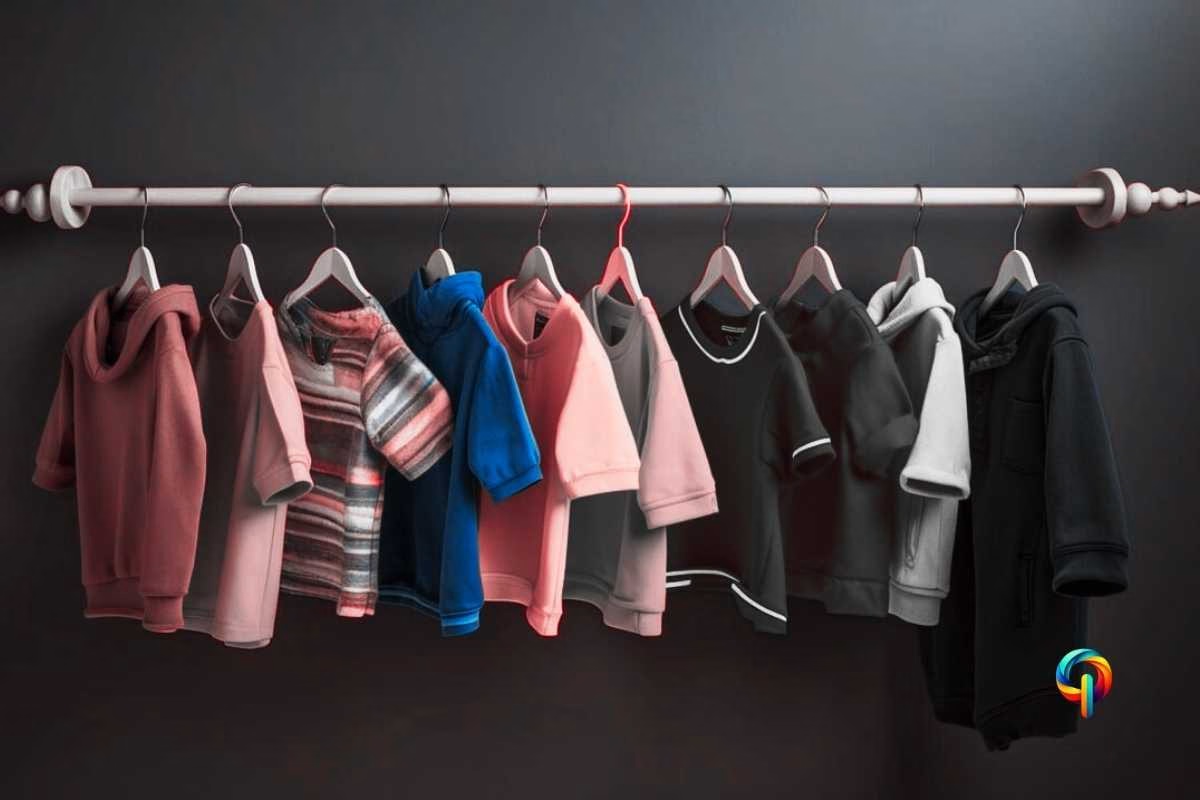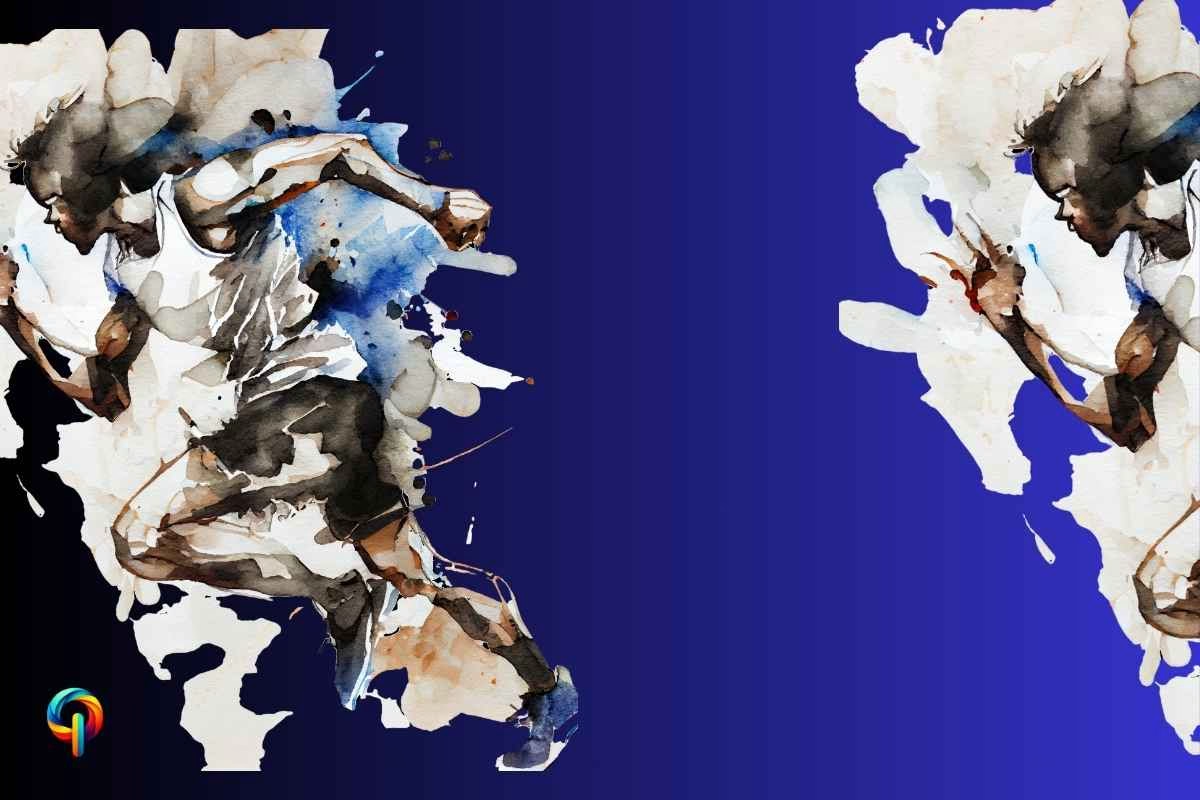
The provided text comprehensively explores the history of human clothing, from its rudimentary beginnings as protection from the elements to its current multifaceted role in self-expression and cultural identity. It traces the evolution of clothing across various eras, highlighting key developments in materials, production techniques, and societal influences. Furthermore, the text addresses contemporary concerns such as sustainability and the impact of technology and climate change on the future of fashion. Finally, it concludes by considering the merging of technology, sustainability, and personal expression as the driving forces of future fashion trends.
Document Tabs OF Human Clothing
What Are the Key Stages in the Evolution of Human Clothing?
Clothing has come a long way from its humble beginnings as a way to stay warm and protected. Early humans relied on animal skins and plant fibers, but as societies evolved, so did fashion. From the status-driven styles of the Middle Ages to the artistic flair of the Renaissance, clothing became a reflection of culture and identity. The Industrial Revolution brought mass production, making fashion more accessible, while today’s trends balance technology, sustainability, and personal expression.
It’s not just fabric—it’s history, creativity, and innovation woven together.
Let’s explore how clothing has shaped, and been shaped by, humanity!
Introduction to the Evolution of Human Clothing.
The evolution of human clothing is an incredible journey through time, reflecting how our needs, values, and tastes have changed. From the basic coverings of ancient times to today’s stylish and innovative fashion, clothing has always been more than just fabric—it’s a window into human history.
In the beginning, clothing was all about function. People needed protection from the elements, so they crafted simple garments from animal skins and plant fibers. These early outfits were practical, helping humans survive in harsh environments. But as societies grew, so did their creativity.
Weaving and dyeing techniques came into play, and suddenly clothes became not only functional but also beautiful, reflecting the cultures and traditions of the time.
Fast forward to the Renaissance, and clothing took on a whole new meaning. It became a way to show off individuality and artistic flair. Intricate embroidery, luxurious fabrics, and elegant designs were everywhere, showcasing the beauty and sophistication of the era. Clothes were no longer just practical; they were symbols of identity, status, and creativity.
Then came the Industrial Revolution, which changed everything. Textile production became faster and cheaper, making fashionable clothing accessible to a wider audience. No longer reserved for the elite, stylish clothes became part of everyday life, setting the stage for modern fashion.
Today, fashion is a dynamic mix of technology, globalization, and self-expression. Clothing isn’t just about covering up or keeping warm—it’s a way to show who you are and celebrate cultural diversity.
At the same time, the world is becoming more environmentally conscious, and sustainable fashion is now a growing priority. Designers are exploring eco-friendly materials and ethical production methods, proving that style and sustainability can go hand in hand.
From ancient skins to modern runways, the story of clothing is a testament to human adaptability and creativity. It’s not just about what we wear—it’s about who we are and where we’re headed.
Ancient clothing: materials, functions and cultural significance
When we think about ancient clothing, it’s fascinating to see how people made the most out of what nature had to offer. Back then, clothing wasn’t just about covering up; it was a blend of practicality, status, and culture.
Materials Used in Ancient Times
Ancient people relied on natural materials they could find in their surroundings. Animal skins, leather, and plant fibers were the go-to options for making clothes. Tanning animal hides and weaving plant fibers were revolutionary techniques, helping early humans create strong and functional garments. These materials didn’t just protect against the weather but also offered comfort and durability for daily life.
The Role of Clothing in Ancient Societies
Clothing in ancient societies was far more than just protection—it served multiple purposes. It showed your social status, tribal identity, and even your spiritual beliefs. Take ancient Egypt, for example. Linen was a popular fabric, but it wasn’t just about comfort—it signified social class. Specific colors and patterns were reserved for royalty and elites, making clothing a visible marker of one’s place in society. Similarly, in many cultures, clothing played a role in rituals, adding layers of cultural meaning.
Cultural Significance of Ancient Clothing
The cultural importance of clothing in ancient times was immense. It reflected the identity, heritage, and achievements of communities. The designs, patterns, and embellishments weren’t just for decoration—they told stories. For instance, Native American tribes used beads, feathers, and intricate designs in their clothing to symbolize bravery, spirituality, and dignity. Their clothes were like wearable art, carrying deep cultural and personal significance.
Understanding the materials, roles, and cultural meanings of ancient clothing gives us a window into the lives of our ancestors.
It’s amazing to see how clothing was woven into the very fabric of human history and culture, evolving alongside society to become the rich and diverse tradition we have today.
Primitive Clothing: A Peek into Old-Fashioned Society
Let’s take a journey back to the Middle Ages, a time when clothing wasn’t just about covering up—it was a loud and clear statement of social status. What you wore could tell the world if you were a noble or a farmer, rich or poor.
Feudal Society and Clothing
In medieval times, your outfit spoke volumes about your place in society. Kings, queens, and nobles flaunted their wealth through luxurious clothing made from silk and velvet, often adorned with precious stones and intricate embroidery. Meanwhile, farmers and the working class wore simple, functional clothes made mostly of wool and linen. These practical outfits were designed to endure their daily labor but were a stark contrast to the opulence of the elite.
Materials and Techniques
The Middle Ages saw significant advancements in clothing materials and production techniques. Wool was the most widely used fabric across Europe, while linen was also quite popular.
Tailoring and weaving became more sophisticated, and the art of dyeing fabrics added a splash of variety to wardrobes. As techniques improved, clothing not only became more diverse but also better fitting and more visually appealing—further reinforcing social distinctions.
Fashion Across Classes
Fashion in the medieval period was deeply influenced by social class. The elite draped themselves in long gowns, fitted bodices, and grand cloaks that showcased their wealth and sophistication. Laws known as “sumptuary laws” even dictated who could wear certain fabrics and colors, ensuring that luxury remained the privilege of the rich.
On the other hand, the lower classes wore simple, durable garments that were practical for their physically demanding lives. These outfits focused on comfort and longevity rather than style.
In essence, medieval clothing was much more than a necessity; it was a mirror reflecting the structure and values of feudal society.
The fabrics, techniques, and styles of the time give us a fascinating glimpse into the lives of people, from nobles to peasants, and reveal how deeply intertwined fashion was with status and identity.
Clothing Renaissance: Where Art and Fashion Became One
The Renaissance was a magical time when clothing didn’t just cover bodies—it told stories of art, culture, and personal identity. Let’s dive into how this era made fashion a masterpiece!
How Clothing and Culture Merged
During the Renaissance, fashion wasn’t just about looking good; it was a reflection of the cultural and artistic rebirth sweeping through Europe.
Art and fashion fed off each other, with designers drawing inspiration from renowned artists like Leonardo da Vinci and Michelangelo. Their understanding of anatomy and detail pushed fashion to flatter the human form like never before.
This era celebrated beauty, individuality, and sophistication. Rich fabrics, bold colors, and intricate embroidery weren’t just for show—they were a statement of wealth and progress.
The middle class started mimicking the elite’s style, making fashionable clothing a hot trend for everyone climbing the social ladder. Fashion became more than utility; it turned into a personal expression of identity and status.
Advances in Textile Production
Textile production boomed during this time, paving the way for more luxurious clothing. Silk from Asia became the star fabric, while new weaving techniques brought complex patterns and textures into play.
These advancements made Renaissance fashion more vibrant and opulent, creating a clear divide between the elite and the common folks.
Trendy Renaissance Styles
Renaissance fashion had a dramatic flair that was hard to miss.
Men’s outfits featured doublets and stockings with slashing and puffing techniques to reveal contrasting fabrics beneath—bold and eye-catching!
Women’s clothing was all about tight bodices, voluminous skirts, and elaborate headdresses. Bright colors and intricate embellishments screamed wealth and status, turning every outfit into a showstopper.
In short, the Renaissance didn’t just transform art and culture—it revolutionized fashion, making it a powerful symbol of personal and societal identity. It was a time when clothing truly became wearable art!

18th Century Clothing: A Blend of Enlightenment and Elegance
The 18th century, known as the Age of Enlightenment, didn’t just revolutionize ideas—it transformed fashion too! This era brought logic, individualism, and scientific curiosity into the mix, making clothing more refined and sophisticated. People moved away from the heavy, rigid styles of the past and embraced beauty with a touch of practicality.
New Fabrics, New Styles
This was the time when lighter, more breathable fabrics like cotton and muslin stole the spotlight. These materials were a fresh change from the wool and silk of earlier centuries and gave fashion a more natural, effortless look. Enter the Rococo style—a design aesthetic defined by intricate, delicate patterns. It heavily influenced clothing, giving it a flair for elegance and ornamentation.
Colonial Influence on Fashion
Colonialism left a deep mark on 18th-century clothing. The constant exchange of goods and cultures between Europe and its colonies brought exotic materials and styles into the fashion scene. Indian cotton, Chinese silk, and African prints blended with European designs, creating a colorful and diverse wardrobe.
This era also marked the beginning of a global fashion industry, as trade routes allowed trends to travel faster than ever.
By the end of the century, fashion reflected not just beauty but the interconnectedness of a globalized world—a mix of Enlightenment ideals and cultural exchanges that forever changed how people dressed.
19th Century Clothing: Fashion Meets Industry
The 19th century brought a whirlwind of changes, and clothing was no exception. With the Industrial Revolution in full swing, the way clothes were made and worn underwent a massive transformation.
Industrial Revolution and Ready-to-Wear Clothing
The invention of sewing machines and advancements in mechanical textile production changed everything. Suddenly, making clothes became faster and cheaper, paving the way for ready-to-wear fashion. For the first time, ordinary people could afford stylish outfits, and the fashion industry began to boom.
Victorian Era Fashion: Grandeur and Grace
Fashion in the Victorian era was all about drama and formality. Women wore tight corsets to create that iconic hourglass figure, paired with voluminous skirts supported by crinolines and bustles. High-necked blouses completed their elegant look. Men, on the other hand, donned tailored suits with waistcoats and hats, exuding sophistication. Department stores and fashion magazines became a thing, helping people keep up with the latest trends.
Clothing and Social Class
Clothing in the 19th century was a clear indicator of social status. The wealthy followed strict fashion rules, using their outfits to flaunt their honor and reputation. In contrast, working-class clothing was practical and durable, reflecting the demands of their tough, labor-intensive lives. The rise of the bourgeoisie created a demand for fashionable yet affordable clothing, further driving the industry forward.
The 19th century wasn’t just about looking good—it was a time when fashion became accessible, industrialized, and a key part of expressing social identity. From grand Victorian styles to the rise of ready-to-wear, this era marked a turning point in how we view and wear clothes today.

19th Century Fashion Features
The 19th century had some unique fashion highlights that defined the era. Women adored elaborate hats and ornaments, showcasing their beauty and status. For men, shoes and ties became increasingly essential, adding a polished touch to their outfits.
In conclusion, the 19th century’s fashion revolution perfectly reflected the stylish sophistication and social dynamics of the Victorian era. It was a period where clothing merged artistry with practicality, mirroring the broader social and economic changes of the time.
Early 20th Century Clothing: Shaped by Wars and Innovation
The World Wars and Fashion
The early 20th century was deeply influenced by the turbulence of World War I and World War II, which left a noticeable mark on fashion. Practicality became the priority as resources were scarce, and societal roles shifted. Women, joining the workforce in unprecedented numbers, embraced trousers and shorter hemlines for functionality.
After WWII, fashion took a turn toward elegance and beauty with Christian Dior’s iconic “New Look.” This style, characterized by a cinched waist and full skirts, symbolized a return to femininity and grace after the utilitarian simplicity of wartime clothing.
Haute Couture’s Golden Era
The rise of haute couture cemented Paris as the fashion capital of the world. Legendary designers like Coco Chanel, Elsa Schiaparelli, and Jean Patou redefined women’s fashion with an emphasis on comfort, elegance, and modernity. Haute couture set the gold standard for luxury and craftsmanship, influencing global fashion trends.
Synthetic Fabrics Revolutionize Clothing
The introduction of synthetic fabrics like nylon and polyester was a game-changer. These materials were durable, flexible, and affordable, making stylish clothing accessible to the masses. Designers experimented with these fabrics, creating bold new textures and designs that enriched the era’s fashion scene.
Society Reflected in Clothing
Fashion mirrored the massive societal shifts of the time. Women’s changing roles during the wars brought about more practical and functional clothing, such as trousers and short skirts. For men, military influences shaped styles like trench coats and uniform-inspired suits.
Mid-20th Century Clothing: A Fusion of Elegance and Rebellion
Post-War Fashion Trends
After WWII, fashion entered a transformative phase. The 1950s saw a return to formal, conservative styles. Women’s wardrobes were defined by fitted dresses, full skirts, and high heels, while men embraced tailored suits and hats. However, the 1960s ushered in a cultural shift, with fashion becoming more casual and expressive, driven by social movements and cultural changes.
Music and Film Influence
In the mid-20th century, music and films had a profound impact on fashion trends. Rock ‘n’ roll and iconic musicians like Elvis Presley and The Beatles sparked rebellious, youthful styles. Meanwhile, film stars like Marilyn Monroe and Audrey Hepburn set trends that captivated the public, popularizing timeless looks such as the little black dress and capri pants.
Youth Culture and Subcultures
The 1960s and 1970s saw the rise of youth culture as a dominant force in fashion. The counterculture movement embraced bold, unconventional styles such as tie-dye shirts, bell-bottom jeans, and miniskirts. Subcultures like the mods, hippies, and punks each carved out their unique fashion statements, leaving a lasting legacy on the fashion world.
Women’s Fashion Evolution
Post-WWII women’s fashion made a dramatic shift. The 1950s celebrated femininity with corseted waists, full skirts, and petticoats, signaling a move away from the practicality of wartime clothing. By the 1960s, women were embracing more relaxed and diverse styles, reflecting their growing independence.
Men’s Fashion Refinement
Men’s fashion also saw significant changes. In the 1950s, tailored suits, waistcoats, and fedora hats dominated, showcasing refinement and sophistication. The post-war era leaned toward monochromatic styles, emphasizing simplicity and class while maintaining an air of elegance.
In essence, mid-20th-century fashion was a dynamic blend of post-war conservatism, cultural rebellion, and artistic innovation, all reflecting the shifting tides of society and individuality.

Late 20th Century Clothing
Globalization and Fashion
🎙️ Globalization’s Impact on Fashion
As the 20th century wrapped up, globalization took the fashion world by storm. Advanced communication and transportation technologies meant trends could zip across the globe in no time. Paris and London, of course, stayed strong as fashion powerhouses, but cities like New York, Milan, and Tokyo joined the league of trendsetters. Designers from all corners of the world began gaining international fame, bringing a rich blend of cultural creativity to the global stage.
🎙️ Fast Fashion Takes Over
Fast fashion was the game-changer. Brands like Zara, H&M, and Forever 21 came up with quick production cycles and wallet-friendly prices, making trendy clothes accessible to everyone. Suddenly, keeping up with the latest fashion wasn’t just for the elite anymore. But—it’s not all glam. The fast fashion model sparked serious conversations about its environmental impact and concerns over fair treatment of workers—issues that are still hot topics today.
🎙️ Tech Meets Style
Technology added a fresh twist to the fashion scene. Computer-aided design (CAD) and automated production made creating clothes faster and more efficient, while opening up new horizons for creativity. Fabric innovations like moisture-wicking and temperature-regulating materials weren’t just cool—they made clothes perform better, blending style with function.
Globalization turned the fashion world into a dynamic, interconnected playground. But it also brought challenges that the industry continues to navigate as it evolves.
21st Century Clothing
Sustainability and Ethical Fashion
In the 21st century, fashion is all about being mindful. People now care as much about how their clothes are made as they do about how they look. With growing awareness of environmental and social issues, the demand for sustainable and ethical fashion is booming. Brands are stepping up—using organic fabrics, cutting down on waste, and creating fair workplaces for their workers. Transparency and responsibility are the buzzwords shaping the industry today. 🌿👗
Digital Age and Fashion Trends
Let’s talk tech! Social media platforms like Instagram and TikTok are now the trendsetters of the fashion world. What influencers and celebs wear becomes an instant “must-have.” And shopping? E-commerce has changed the game entirely—your favorite looks are just a click away, no matter where you live. It’s like having the world’s wardrobe at your fingertips! 🛍️📱
Smart and Customizable Clothing
Fashion meets future with customizable and smart clothing. From fitness trackers to high-tech smartwatches, wearable tech is blending style with practicality. Plus, imagine designing clothes just the way you like them—personalized outfits are no longer a dream! And here’s a cool twist: smart fabrics that adapt to your surroundings, like keeping you warm when it’s chilly or cooling you down in the heat. Talk about fashion that works for you! 💡👕
The 21st-century fashion scene is all about being forward-thinking—sustainable, tech-driven, and deeply personal. This isn’t just about looking good; it’s about feeling good and doing good too. The future of fashion? Oh, it’s just getting started! 🚀✨

The Future of Clothing: Embracing Innovation and Technology
Innovative Materials and Technologies
The future of fashion is heading into a whole new realm with the rise of groundbreaking materials and technologies. Think about fabrics grown in labs or biodegradable materials that are not just stylish but also planet-friendly. These innovations promise to make clothing more sustainable while boosting comfort and performance. And here’s the exciting part—smart textiles! Imagine wearing clothes that can monitor your heart rate, track your temperature, or even adapt to changes in the weather. It’s like your outfit has a brain of its own, making life easier and healthier.
Future Fashion Trends
Looking ahead, fashion is going green and getting personal. With more people caring about the planet, sustainable fashion will lead the charge. Shoppers want brands that align with their eco-conscious values. At the same time, customization will take center stage—why wear what everyone else is wearing when you can design outfits that scream you?
And then there’s digital fashion—virtual outfits you can “wear” on social media or in the metaverse. It’s a whole new playground for creativity and comes with a bonus: zero waste. The future of fashion is shaping up to be more interactive, customizable, and durable than ever before. It’s tech meets style at its finest. 🚀
Impact of Climate Change on Clothing: Adapting to a New Reality
Climate Change and Fashion
The fashion industry isn’t just about trends—it’s also adapting to the challenges posed by climate change. Unpredictable weather and resource shortages are forcing brands to rethink how clothes are made. It’s about survival and sustainability in a world that’s changing fast.
Clothes for Every Climate
With extreme weather on the rise, the focus is shifting to fabrics that can handle anything—lightweight yet insulating for sudden chills, breathable and waterproof for rainy days, or UV-protective for scorching heat. Clothing will become more versatile, offering protection no matter the season.
Dealing with Resource Scarcity
Resource scarcity is pushing the fashion industry toward smarter practices. Brands are turning to eco-friendly materials, recycling old garments, and embracing circular fashion where nothing goes to waste. Lab-grown fabrics and biodegradable options will play a huge role in keeping the industry sustainable while slashing its environmental impact.
The bottom line? Climate change is reshaping fashion, but it’s also inspiring innovation. From high-tech materials to sustainable solutions, the industry is gearing up to create clothes that are ready for whatever the future holds.
More FAQ’s on Human Clothing
Q1: How did clothing begin, and what were its earliest purposes?
Clothing started out as something humans needed for survival. Imagine early humans facing harsh climates with nothing but their bare skin—so they began using whatever they could find, like animal hides and plant fibers, to protect themselves from the cold, heat, and rain. These garments were pretty basic, more about function than style, but they were essential for keeping warm, safe, and alive in challenging environments.
Q2: What role did clothing play in ancient societies beyond basic protection?
In ancient times, clothing wasn’t just about staying warm or covered—it had a deeper meaning. It told people who you were, your social status, and sometimes even your beliefs. For example, in ancient Egypt, only royalty and elites could wear certain colors or patterns in their linen outfits, while other cultures used clothing in religious rituals. It was also a way of showing your tribal or community identity, making clothing an early form of self-expression and belonging.
Q3: How did clothing in the Middle Ages reflect social status?
In the Middle Ages, what you wore said a lot about who you were. The wealthy elite dressed to impress in fabrics like silk and velvet, often decorated with intricate embroidery and even precious stones. Meanwhile, the working class kept it simple with clothes made from wool and linen, designed more for function than style. There were even laws—called sumptuary laws—that dictated who could wear what. These rules were meant to keep the lines between social classes very clear, so clothing became a way of literally wearing your status on your sleeve.
Q4: How did the Renaissance change the way people viewed clothing?
The Renaissance was a game-changer for fashion. Suddenly, clothing wasn’t just about covering up or showing off your class—it became an art form. Designers started pulling inspiration from painters and sculptors, creating outfits that were bold, colorful, and beautifully detailed. Rich fabrics and elaborate embroidery were everywhere, and even the growing middle class started copying the styles of the wealthy. Fashion became a way of expressing individuality and progress, reflecting the creativity and innovation of the time.
Q5: What impact did the Industrial Revolution have on clothing production?
The Industrial Revolution completely transformed how clothes were made. Before this, making clothes was a slow, labor-intensive process, but new inventions like the sewing machine and advanced textile production changed everything. Clothes could be made faster, cheaper, and in larger quantities, giving rise to the idea of ready-to-wear fashion. For the first time, stylish outfits weren’t just for the elite—they became accessible to ordinary people, marking the beginning of modern fashion as we know it.
Q6: How did the World Wars influence early 20th-century fashion?
The World Wars brought practicality to the forefront of fashion. With women stepping into the workforce, clothing had to adapt—trousers and shorter skirts became common because they were easier to work in. After WWII, there was a shift back to elegance and glamour, with Christian Dior introducing his famous “New Look,” featuring nipped waists and full skirts. It was a time of contrast—functionality during the war and a return to beauty and luxury afterward. The rise of haute couture during this period also helped set the tone for global fashion trends.
Q7: What was the significance of mid-20th-century fashion trends?
The mid-20th century was a fascinating time for fashion because it balanced elegance with rebellion. In the 1950s, people embraced polished, formal styles—think tailored suits and classy dresses. But then the 1960s shook things up with bold, expressive fashion influenced by youth culture, music, and movies. Subcultures like mods, hippies, and punks each created their own unique looks, and fashion became a way for people to showcase their identity and challenge societal norms. It was a period where style really began to reflect personality and attitude.
Q8: What is “fast fashion,” and what are its impacts?
Fast fashion is all about getting trendy clothes into stores as quickly and cheaply as possible. It really took off in the late 20th century, making it easy for people to stay on top of trends without breaking the bank. But this convenience comes at a cost. The fast fashion industry has been heavily criticized for its environmental impact, from massive waste to pollution caused by cheap production processes. On top of that, the working conditions for garment workers in some parts of the world raise serious ethical concerns. It’s a reminder that staying stylish shouldn’t come at the expense of people or the planet.
Q9: How has technology transformed clothing in the 21st century?
Technology has taken fashion to a whole new level in the 21st century. From computer-aided design (CAD) making it easier to create intricate patterns to high-tech fabrics that regulate temperature or wick away moisture, clothing is now as functional as it is stylish. Social media has also had a huge influence, with platforms like Instagram shaping trends almost instantly. E-commerce has changed how we shop, and now we’re even seeing smart clothing with embedded tech—imagine a jacket that can charge your phone or track your fitness! The possibilities are endless.
Q10: What are the current trends in sustainable and ethical fashion?
These days, there’s a big push for fashion to become more sustainable and ethical. Brands are using eco-friendly materials, cutting down on waste, and ensuring fair labor practices for workers. Transparency has become a buzzword, with consumers demanding to know where their clothes come from and how they’re made. It’s about making fashion choices that are kinder to the planet and the people who create our clothes. From organic fabrics to upcycling old garments, the focus is shifting toward thoughtful, responsible fashion that doesn’t compromise on style.
Promoting Resilience and Sustainability in Fashion
The fashion industry is at a turning point, especially in a world shaped by climate change. To survive and thrive, it’s not enough to just “go green”—it’s about rethinking every step of a garment’s journey. From design to disposal, everything needs to prioritize the planet. Adopting sustainable materials, reducing waste, and ensuring ethical practices are no longer optional—they’re essential. Brands that embrace this change and meet the expectations of eco-conscious consumers will lead the charge toward a more resilient and sustainable future.
The Evolution of Clothing: A Journey Through Innovation and Culture
Fashion is a story—a testament to how humans innovate, adapt, and express their rich cultural diversity. From the simplicity of ancient garments to today’s high-tech, sustainable styles, clothing has always evolved to fit our changing needs and desires.
Looking to the future, we see three big forces shaping fashion: technology, sustainability, and personal expression.
Smart Textiles: The Future of Clothing
Imagine wearing clothes that adjust to your body’s temperature or monitor your health in real-time. Smart textiles are no longer science fiction—they’re becoming a reality. These intelligent fabrics adapt to your physical condition or environment, blending style with functionality in ways we never thought possible.
Sustainable Fashion: A Greener Tomorrow
Sustainability isn’t just a trend; it’s a movement. The future of fashion lies in recyclable and biodegradable materials, production processes that reduce waste, and ethical labor practices. Greener fashion means a smaller environmental footprint and a brighter future for the planet.
Customizable and Digital Fashion: Your Style, Your Way
Today, people want more than just “off the rack” clothing—they want pieces that reflect their personality. The demand for customizable fashion is skyrocketing, allowing customers to design their own outfits. Digital fashion is adding a whole new layer to this trend, with virtual garments that you can wear online. It’s creativity without limits!
From ancient simplicity to future complexity, fashion’s journey is a fascinating blend of tradition and innovation. It reflects who we are—our needs, our creativity, and our drive to adapt.
As we continue this journey, the combination of technology, sustainability, and individuality will reshape the way we wear, design, and think about clothing.
What a stylish future to look forward to!







